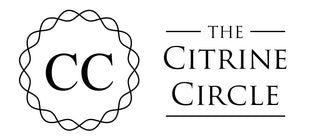So what is the difference between Agate, Chalcedony and Jasper? What are they exactly? Well trade names don't help for a start, but there are easy differences to spot once you know what to look for.
Firstly though, let's start with Quartz. Quartz has a chemical formula made up of SiO2, or Silicon Dioxide. Quartz comes in many forms, and Jasper, Agate and Chalcedony are actually all forms of Quartz. Let's get a little scientific to start with - but not too much I promise!
Microcrystalline (or Cryptocrystalline) means the crystal structure is too small to see with the naked eye, a microscope is required. Macrocrystalline Quartz is Quartz that has crystal growth visible to the naked eye.
Microcrystalline Quartz is the one we're interested in for this article. As a general umbrella term, microcrystalline Quartz is separated into opaque or translucent. If it is opaque, it is generally referred to as a Jasper in the gemology/mineral collection world. If it is translucent, ie it lets some light pass through, then it is a Chalcedony. If it is a banded or striped Chalcedony, then it is an Agate.
The confusion comes where many varieties of Chalcedony have been given the name Agate but they are not actually banded. Flower Agate, Orca Agate and Moss Agate are not true Agates, as they are not banded. However this doesn't make them fake crystals, it's just the name has been in use for so long that renaming Moss Agate to Moss Chalcedony would just cause confusion. Botswana Agate, Blue Lace Agate and Iris Agate for example are all true Agates as they have banding.
Although Agates do come in a wonderful natural variety of colours, many Agates are dyed, especially the more common Brazilian Agates, which are coloured shades of bright blue, pink, green and purple. There is also a newer 'Sardonyx' or Silk Agate, also known by various other names that is actually a grey banded Agate from Madagascar that has been treated with sugar to turn it shades of red, orange and black. True Sardonyx does exist, but it is not like these treated Madagascar Agates.
Opaque microcrystalline Quartz is known in general as Jasper, although there are a large amount of crystals that bear the name Jasper even though they are not a true Jasper, ie they are not composed of Silicon Dioxide (SiO2). Bumblebee Jasper, Rainforest Jasper, Dalmatian Jasper and Kambaba Jasper are just some of the "imposter" Jaspers.
So in summary, microcrystalline Quartz can be divided into 3 categories:
- If it is opaque (no light passes through) - it is a Jasper
- If it is translucent (some light can pass through) - it is a Chalcedony
- If it is translucent (some light can pass through) AND it is banded or striped - it is an Agate


Jan
Thank you for sharing this information